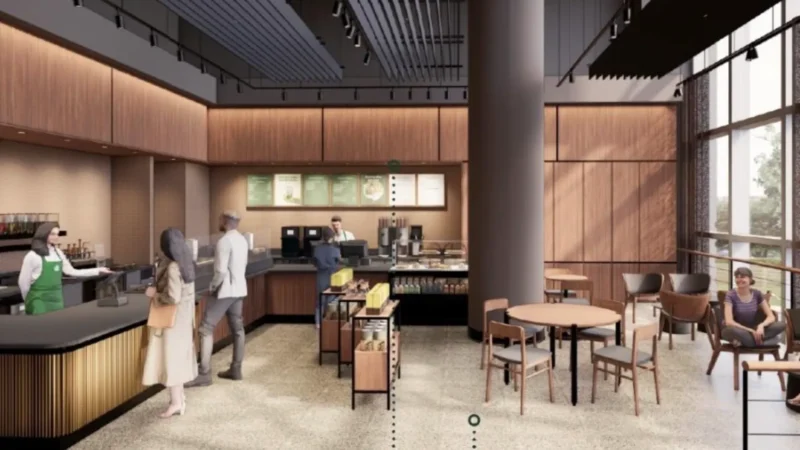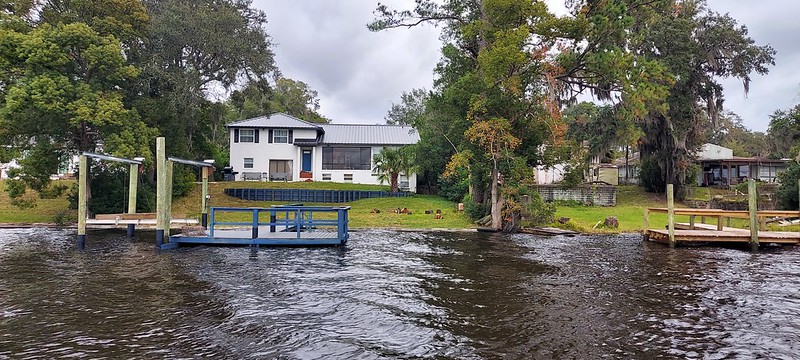
This will be an exciting year for Jacksonville’s urban core. While much local focus has been centered on Downtown revitalization, the real estate market continues to heat up in adjacent neighborhoods and districts. In 2024, here are four trends that could permanently change urban Jacksonville for the better.
Black urban core neighborhoods seek historic designation

One major trend to watch in 2024 is historic Black neighborhoods in the urban core that are taking advantage of designation on the National Register of Historic Places as a means to support revitalization without the displacement and other negative impacts brought on by gentrification – in other words, the process of withintrification. Durkee Gardens in the Durkeeville neighborhood northwest of Downtown became Jacksonville’s first Black historic district in 2020, followed by the Eastside Historic District in late 2023. The Eastside in particular has become a template for withintrification and community-driven investment, and now other Black neighborhoods across Jacksonville’s urban core are also looking into becoming National Register districts, including LaVilla and North Riverside.
A National Register listing comes with a number of benefits. Most importantly, it allows owners of contributing properties to apply for all manner of grants for preservation and revitalization projects, alleviating the cost burden of maintaining historic buildings. It also allows neighborhoods to share resources and strategies with the wider network of listed districts and structures.
A National Register district differs from a local historic district, as Jacksonville has in Springfield, Riverside and Avondale. The key difference is that it doesn’t impart protections and restrictions on the contributing properties in the way that local historic districts do. For example, in Riverside or Springfield, owners of contributing structures must follow specific guidelines when working on their buildings, such as ensuring the materials and facade design adhere to the historic use of the structure, which can add cost and logistical difficulty to restoration projects. In a National Register district, however, owners can alter or update their structures freely, removing one major hurdle to revitalization in distressed neighborhoods. They also can be used as a launching pad for zoning modifications to help preserve cultural heritage, existing building stock and affordable housing, all of which slows down the negatives of gentrification.
The year of Downtown public spaces

The stars are aligned for 2024 to be the year of the Downtown park, as several high-profile public park projects are expected to finally open over the next few months.
In a few weeks, the LaVilla Link, the first segment of Groundwork Jacksonville’s ambitious Emerald Trail system, will open to the general public. Originally anticipated to be completed in 2022, the LaVilla Link will connect the neighborhoods of Brooklyn and LaVilla with the S-Line Urban Greenway Trail in New Town. This $4 million, 1.3-mile pedestrian and bicycle trail will serve as the “Model Mile” for the proposed 30-mile Emerald Trail network.
Directly connected to the LaVilla Link, Lift Ev’ry Voice and Sing Park is under construction at the intersection of Lee and West Adams streets in LaVilla. A project of the city of Jacksonville’s Department of Parks, Recreation and Community Services, the park is being built on the birth site of the late brothers James Weldon Johnson and John Rosamond Johnson. Here, the brothers wrote and composed the stirring hymn “Lift Ev’ry Voice and Sing,” often called the Black national anthem, in 1900. The park is expected to be completed in mid-2024.
Another long-delayed project, Friendship Fountain Park, is expected to open to the public in 2024 as well. Originally designed by architect Taylor Hardwick and dating back to 1965, Friendship Fountain was once the highest-shooting fountain in Florida. In 2019, the Downtown Investment Authority announced a $6 million plan to convert the fountain and surrounding park into a state-of-the-art destination for water and light/sound shows. Closed since 2021, it was originally expected to be finished by early 2022, but it’s operated only sporadically for nearly two years due to ongoing delays. Work restarted in late 2023, and the city is now targeting a February 2024 reopening.
The opening of these three high-profile projects will attract thousands to Downtown over the next few months. A fourth, Riverfront Plaza, won’t be completed this year but should make considerable progress over the next 12 months. The status of the former Jacksonville Landing site has been a sore spot for Downtown advocates, including us at The Jaxson, since the city took possession of the property in 2019 and immediately demolished the festival marketplace. Despite announced plans for redevelopment, the space sat as an empty lot, popularly known as “Lenny’s Lawn” or the “Landing,” for four years. Moving the park project forward has been a major initiative of Mayor Donna Deegan, and work on Phase I began in earnest in the second half of 2023 and has continued apace.
Phase I is expected to take two years to complete. The work centers on rerouting Independent Drive to increase the size of the park, and the phase will continue with the reconstruction of the bulkhead and Northbank Riverwalk and the creation of a pedestrian plaza at the intersection of Hogan Street and Independent Drive. This and subsequent phases will include attractions such as curving walkways, native landscaping, a multipurpose lawn, water play area and a café with a roof-mounted playground.
Industrial adaptive reuse will increase in popularity

As we’ve noted before, adaptive reuse of existing buildings is driving much of the forward momentum in the Downtown Northbank and other parts of the urban core. While much of the energy has gone into converting office and commercial buildings, industrial adaptive reuse is emerging as a major part of this renaissance.
At the time of its completion in 1913, the Historic Eastside’s Union Terminal Warehouse was the largest industrial building in Florida. Now the 330,000-square-foot warehouse is the centerpiece of a $72 million redevelopment project, which is Florida’s first Historic Tax Credit project in a Federal Opportunity Zone and the state’s largest Historic Tax Credit project by square footage. When completed later this year, the project will include 228 apartments, over 20,000 square feet of community commercial space, even more maker/artist studio space, and room for a restaurant and coffee shop.
And the Eastside isn’t the only place where industrial adaptive reuse is taking off in Jacksonville. In 1897, Henry M. Flagler opened the Jacksonville Terminal Co., which quickly became one of the busiest train stations in the country. Flagler’s company soon leased surrounding property to supporting industries in what’s now been rebranded the Rail Yard District. The Florida Ice Manufacturing Co. was one of the earliest to open, in 1902. Here, ice was manufactured for household and railcar use, and it supplied cold storage to local industries. The cold storage business eventually became Caribbean Shipping & Cold Storage. Recently, a portion of the former cold storage warehouse was redeveloped into a creative office building that serves as the central anchor for a mixed-use development called Dennis + Ives.
These two major redevelopment projects are a part of a national trend that has witnessed obsolete industrial buildings transformed into a mix of uses, including apartment lofts, entertainment venues, office space, restaurants and boutique retail. With Downtown surrounded by century-old warehouses, expect to see even more large infill and adaptive reuse projects proposed for former local industrial sites in 2024.
F&J railroad corridor: The urban core’s next revitalization hotspot

Today it’s just a wide linear green strip of overgrown vegetation serving as the border between Springfield and the Eastside. But 143 years ago, this forgotten path was a major gateway into Florida’s largest city. In 1881, it was part of the Fernandina and Jacksonville Railroad, the first railroad constructed through Springfield, running 22 miles from Yulee in Nassau County to the St. Johns River. In 1898, the Atlantic, Valdosta & Western Railway built the last railroad line into Jacksonville, running parallel with the F&J between Springfield and Historic Eastside.
After the Fernandina and Jacksonville became the Seaboard Air Line, or S-Line, in 1899, and the Atlantic, Valdosta and Jacksonville was acquired by Southern Railway in 1901, by World War II, the logistics provided by the railroad corridor had attracted several planing mills and other industrial uses including Swisher International, Coca-Cola, Jacksonville Shipyards and Maxwell House Coffee.
But what was considered to be cutting edge industrial architecture 100 years ago had become obsolete by the late 20th century. As a result, rail traffic declined, leading to the abandonment of a significant portion of the old rail corridor after the closure of the Jacksonville Shipyards.
While manufacturing may be out, the rail corridor has left Jacksonville’s urban core with a collection of old unique buildings that can’t be replicated with modern construction techniques. Sandwiched between Springfield and Historic Eastside, two popular revitalizing neighborhoods, the old railroad corridor is poised to become the urban core’s next revitalization hot spot in 2024.
At the St. Johns Riverfront, plans continue to progress on the redevelopment of the former Jacksonville Shipyards site into a new riverfront park. In the Eastside, Atlanta-based Columbia Ventures will complete the restoration of the Union Terminal Warehouse into a mixed-use property in 2024. A few blocks north in Springfield, the Florida Mining Gallery will be relocating its museum-style contemporary art gallery to a former warehouse. On the north end of the corridor, Future of Cities will rehabilitate 8.3-acres of old industrial property into the Phoenix Arts & Innovation District. When complete, the collection of Springfield Warehouse District buildings will be repurposed into artist studios, gathering spaces, retail and restaurants.
As for the old abandoned railroad corridor itself, there are plans to revamp it into a future segment of the Emerald Trail system. With these major adaptive reuse projects anchoring the linear corridor, expect to see additional projects announced in 2024 for nearby aging industrial sites.








